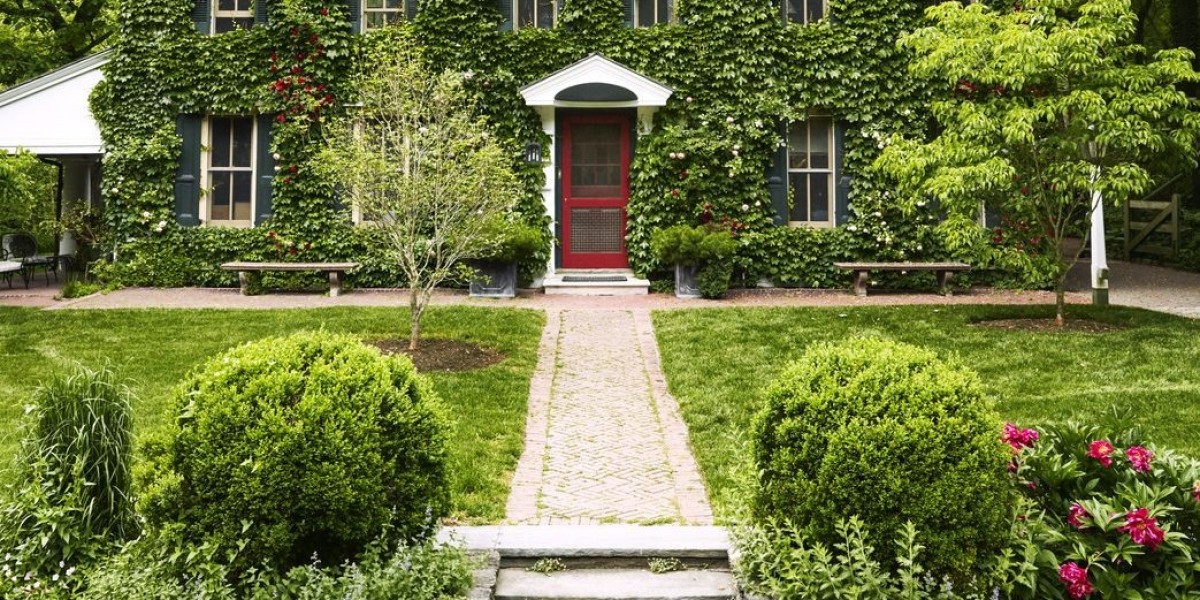Landscaping is the process of changing and enhancing the natural elements of an outdoor area, such as a garden, park, or public space, to make it more visually appealing, practical, and sustainable. It employs a variety of design elements, including planting, hardscaping, and lighting, to produce a cohesive and appealing outdoor environment.
Here is a brief description of the significance of landscaping:
Landscape design is critical for enhancing the aesthetics and functionality of outdoor environments. A well-designed landscape may transform an average outdoor space into a beautiful and soothing location that represents the owner's preferences and personality. Furthermore, landscaping has a number of environmental benefits, including improved air quality, reduced noise pollution, and increased water and energy efficiency. Landscaping can also boost a property's value and create a more pleasant environment for visitors and guests. Thus, landscaping is critical for creating an attractive, sustainable, and healthy outside environment that improves our quality of life.
Landscaping improves the aesthetics of outdoor spaces, making them more appealing and attractive. A well-designed landscape may transform an outside space into something distinctive and attractive, reflecting the owner's style and personality. Landscape design can also serve to establish a sense of continuity between a property's outside and internal rooms, thereby boosting its overall aesthetic appeal.
Landscaping offers several health benefits. Plants, for example, can help to enhance air quality by collecting toxins and releasing oxygen, both of which can benefit respiratory health. Outdoor spaces can also encourage physical activity, such as walking, running, or gardening, which can benefit cardiovascular health and emotional well-being.
Landscaping has environmental benefits such as minimizing erosion, conserving water, and enhancing soil quality. Trees and plants can help absorb and filter precipitation, which reduces runoff and erosion. Furthermore, correctly positioned plants can help to shade buildings and save energy by lowering the demand for air conditioning.
Landscaping can increase home value by improving aesthetics and utility. A well-designed landscape can create an inviting ambiance, making a property more appealing to potential buyers or renters. Landscaping can also help to save energy by shading buildings and lowering the need for air conditioning.
What is residential landscaping?
Residential landscaping is the design and maintenance of outdoor spaces in and around homes. Lawn and garden upkeep, hardscaping (such as patios or retaining walls), home renovation and softscaping (plants and trees) are all common types of home landscaping.
Commercial landscaping involves designing and maintaining outdoor environments for commercial facilities, including office buildings, public spaces, and industrial sites. Common examples of commercial landscaping include the design and maintenance of public places like parks and gardens, as well as the design and care of office building exteriors and industrial sites.
Landscape design elements
Plantings are a key part of landscaping. We intentionally plant trees, bushes, flowers, and other plants to achieve a desired visual effect. Plants may enhance a landscape by adding color, texture, and depth, as well as providing environmental benefits including erosion reduction and improved air quality.
Hardscape is the use of non-living elements in landscaping, including stones, bricks, concrete, and wood. You can use hardscaping to create paths, patios, walls, and other features that enhance a landscape's functionality and visual appeal.
Water features can enhance a landscape by providing a soothing and relaxing environment. Fountains, ponds, and streams can also help to create a sense of continuity between interior and outdoor spaces while delivering environmental benefits such as runoff reduction and wildlife habitat.
Outdoor lighting may highlight and enhance landscape components like plants and water features.
ensure the proper construction and development of their outdoor space. A landscape designer can assist you with site evaluation, plant selection, hardscaping design, and installation, as well as provide ongoing landscape management and care.
Conclusion
Landscaping is critical for producing beautiful, practical, and sustainable outdoor landscapes that have a variety of benefits, including improved air and water quality, lower energy consumption, and increased property aesthetic appeal.
Final thoughts: Whether you want to improve the outward appeal of your home or create a calm and inviting outside setting, landscaping can help. Understanding the benefits of landscaping, the many types of landscaping, the elements involved, and Primex will help you create a beautiful and sustainable outdoor place that improves your quality of life. Primex offers many services such as painting services in dubai








